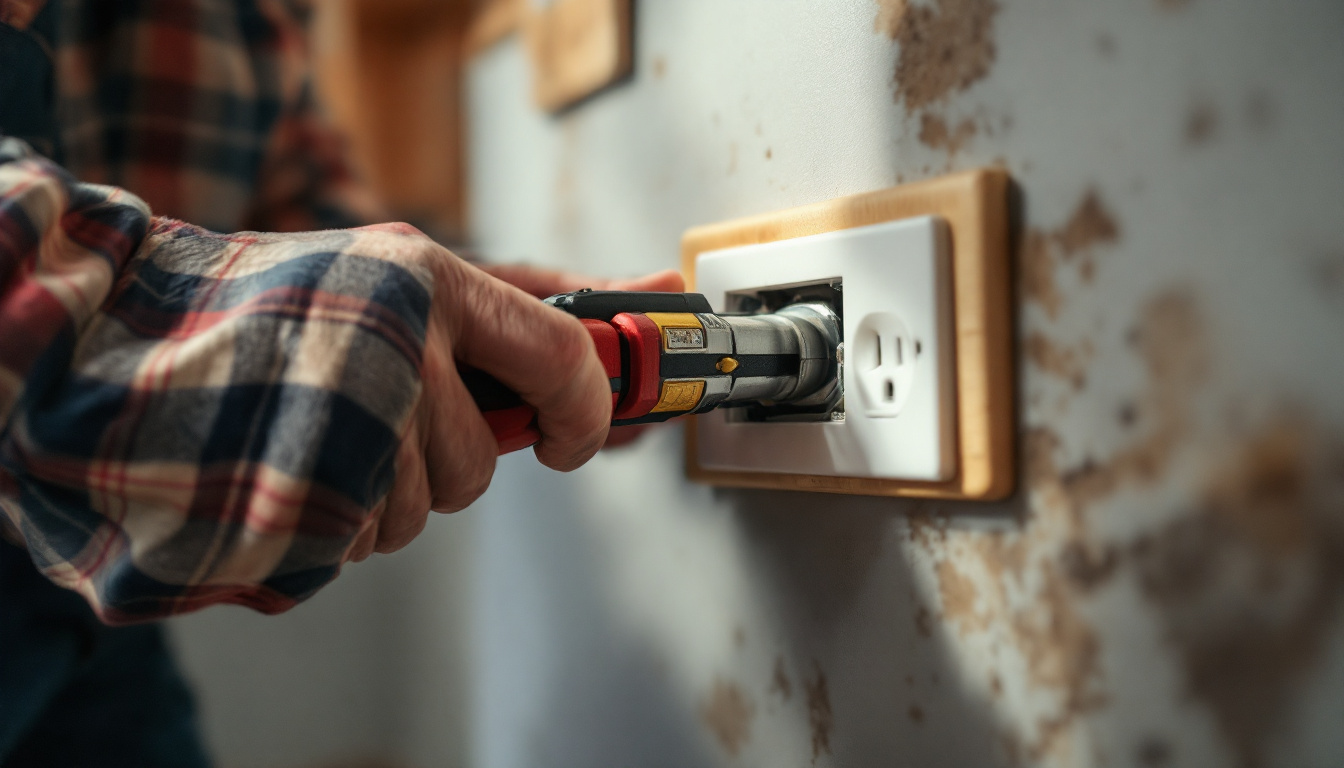
As a lighting contractor, understanding the various dryer outlet types is crucial for ensuring safety and compliance in your projects. This article delves into the specifics of dryer outlets, highlighting the do’s and don’ts that every lighting contractor should be aware of.
Dryer outlets are designed to accommodate the specific electrical requirements of clothes dryers. The most common types of dryer outlets include 3-prong and 4-prong configurations, each with distinct characteristics and applications. Familiarity with these types is essential for proper installation and safety.
The 3-prong dryer outlet, which has been in use for decades, consists of two hot wires and one neutral wire. This configuration was common in older homes and is still found in many existing installations. However, it is important to note that this type of outlet lacks a dedicated ground wire, which can pose safety risks.
When working with 3-prong outlets, contractors must ensure that the existing wiring is up to code. In many jurisdictions, the use of 3-prong outlets is being phased out in favor of safer alternatives. Therefore, it is advisable to assess whether an upgrade to a 4-prong outlet is necessary during any renovation or new installation. Additionally, homeowners should consider the age of their electrical systems; older wiring may not only be incompatible with modern appliances but also may not meet current safety standards, making upgrades not just a matter of convenience, but a critical safety measure.
The 4-prong dryer outlet is the modern standard and includes two hot wires, one neutral wire, and a ground wire. This additional ground wire enhances safety by providing a direct path for electrical faults, reducing the risk of shock or fire. As a lighting contractor, it is critical to promote the installation of 4-prong outlets in new constructions or during significant renovations.
When installing a 4-prong outlet, ensure that the circuit is properly rated for the dryer’s amperage. This typically involves a 30-amp circuit, which is essential for accommodating high-powered appliances. Always refer to local electrical codes and regulations to ensure compliance. Furthermore, it is important to educate homeowners on the benefits of 4-prong outlets, not only in terms of safety but also in terms of efficiency. A properly grounded outlet can help improve the performance of the dryer, potentially reducing drying times and energy consumption. As energy efficiency becomes an increasingly important consideration for homeowners, upgrading to a 4-prong outlet can be a wise investment that pays off in lower utility bills and enhanced appliance longevity.
Proper installation of dryer outlets is paramount for both safety and functionality. Here are some essential do’s to keep in mind:
Each locality has specific electrical codes that dictate how electrical systems should be installed. Familiarizing yourself with these codes is not just a best practice; it is a legal requirement. Adhering to these regulations ensures that installations are safe and reduces the risk of future liabilities.
Consulting the National Electrical Code (NEC) can provide a solid foundation, but always verify local amendments that may apply. This diligence will help avoid costly mistakes and potential hazards. Additionally, some regions may require permits for electrical work, so it’s wise to check with your local building department before starting your installation. This proactive approach not only keeps you compliant but also helps in maintaining the value of your property.
Using the appropriate wire gauge is crucial for dryer outlets. Typically, a 10-gauge wire is recommended for 30-amp circuits, which are standard for most dryers. Using a wire that is too thin can lead to overheating and potential fire hazards.
When selecting wire, consider the length of the run as well. Longer distances may require a thicker gauge to compensate for voltage drop, ensuring that the dryer operates efficiently and safely. It’s also important to choose wires that are rated for the environment in which they will be installed. For instance, if the wiring will be exposed to moisture, selecting wires with appropriate insulation can prevent deterioration and ensure longevity.
Once the dryer outlet is installed, testing it is a critical step that should never be overlooked. Use a multimeter to check for proper voltage and ensure that the outlet is wired correctly. This step can prevent future issues and ensure that the dryer operates as intended.
Additionally, consider using a receptacle tester, which can quickly identify wiring issues such as open grounds or reversed polarity. This simple tool can save time and enhance safety in the long run. Furthermore, it’s advisable to conduct periodic checks of the outlet even after installation. Over time, wear and tear can affect electrical connections, so regular testing can help catch potential problems before they escalate, ensuring your dryer remains safe and efficient for years to come.
While there are many best practices to follow, there are also common pitfalls to avoid. Here are some don’ts that every lighting contractor should heed:
One of the most critical aspects of electrical safety is proper grounding. Ignoring grounding requirements can lead to severe consequences, including electrical shock and fire hazards. Always ensure that the outlet is grounded correctly, especially when upgrading from a 3-prong to a 4-prong outlet.
In cases where grounding is not feasible, consider alternative solutions such as installing a Ground Fault Circuit Interrupter (GFCI) outlet. However, this should be a last resort, and proper grounding should always be prioritized. It’s also wise to consult local electrical codes, as they may have specific grounding requirements that differ from general practices. Ensuring compliance not only enhances safety but also protects you from potential legal liabilities should an incident occur.
Overloading circuits can lead to overheating and potential fire hazards. It is crucial to ensure that the circuit dedicated to the dryer is not shared with other high-wattage appliances. Each appliance should have its own dedicated circuit to prevent overload and ensure safe operation.
When planning electrical installations, consider the total load on the circuit and ensure that it does not exceed the rated capacity. This foresight can prevent future complications and enhance safety. Additionally, it’s beneficial to educate homeowners about the importance of monitoring their appliance usage. Many may not realize that running multiple high-wattage devices simultaneously can strain the circuit, leading to dangerous situations. Regularly checking the amperage draw of appliances can help maintain a safe electrical environment.
Using damaged or worn out outlets can pose significant safety risks. Inspect all outlets thoroughly before installation, and replace any that show signs of wear, such as cracks or discoloration. This diligence ensures that the outlet will perform safely and effectively over time.
Additionally, if an outlet is frequently tripping or showing signs of electrical failure, it may be time to replace it. Always prioritize safety and functionality over cost-saving measures. Furthermore, consider the age of the electrical system in the home. Older wiring may not be compatible with modern appliances and could require an upgrade to handle the increased electrical demands. By addressing these issues proactively, you can help prevent future electrical problems and ensure a safer environment for everyone in the household.
In addition to the general do’s and don’ts, there are specific considerations that lighting contractors should keep in mind when installing dryer outlets.
The location of the dryer outlet is crucial for both functionality and safety. Ensure that the outlet is easily accessible for plugging and unplugging the dryer. It should also be located in a dry area to prevent moisture-related issues.
Consider the layout of the laundry room or area where the dryer will be installed. The outlet should be positioned to minimize the length of the dryer cord, which can help reduce the risk of tripping hazards and improve the overall aesthetics of the space.
Proper ventilation is essential for dryers to operate efficiently and safely. Ensure that the dryer is installed in a well-ventilated area, and that the venting system is correctly configured. This can help prevent overheating and reduce the risk of fire.
When planning the installation, consider the path of the venting duct and ensure that it is free of obstructions. Regular maintenance of the venting system is also crucial for optimal performance and safety.
As technology evolves, so do the requirements for electrical installations. Future-proofing your dryer outlet installations can save time and money in the long run. Consider installing outlets that accommodate newer technologies, such as smart dryers that may have different electrical requirements.
Additionally, keeping abreast of emerging electrical codes and standards can help ensure that installations remain compliant and safe. This proactive approach can enhance the reputation of the contractor and build trust with clients.
Understanding the various dryer outlet types and adhering to the do’s and don’ts of installation is essential for lighting contractors. By focusing on safety, compliance, and functionality, contractors can ensure that their installations meet the highest standards.
Whether working with 3-prong or 4-prong outlets, following best practices will not only enhance the safety of the installation but also contribute to the overall satisfaction of clients. By prioritizing quality and safety, lighting contractors can build a reputation for excellence and reliability in their field.
Ready to elevate your lighting installations with the highest quality products? Look no further than LumenWholesale. We offer an extensive selection of spec-grade lighting products that meet rigorous industry standards, ensuring your projects shine with reliability and high performance. With unbeatable wholesale prices and the convenience of free shipping on bulk orders, you can trust LumenWholesale to provide the best value without hidden fees or compromises. Make your next project a success and experience the best in wholesale lighting today.

Discover the simple steps to changing a fluorescent bulb and explore how this small task can significantly enhance your home’s energy efficiency.

Discover the essential guide for lighting contractors to master tubular LED lamps.

Discover how solar lights can revolutionize your outdoor lighting projects with eco-friendly solutions that enhance aesthetics and reduce energy costs.

Illuminate your projects with our comprehensive guide on driveway solar lamp posts.